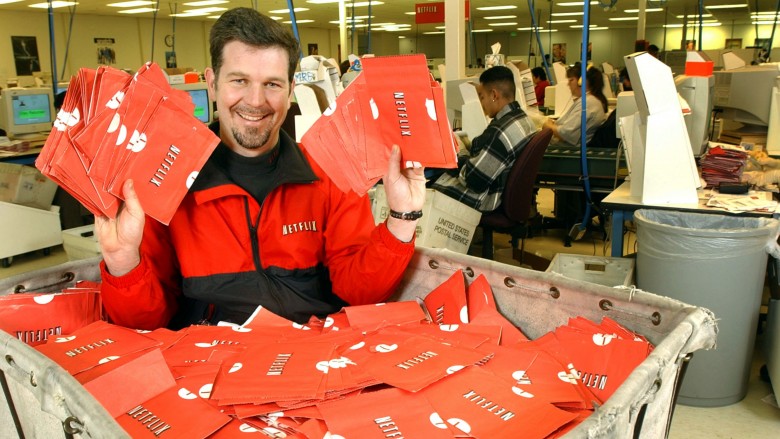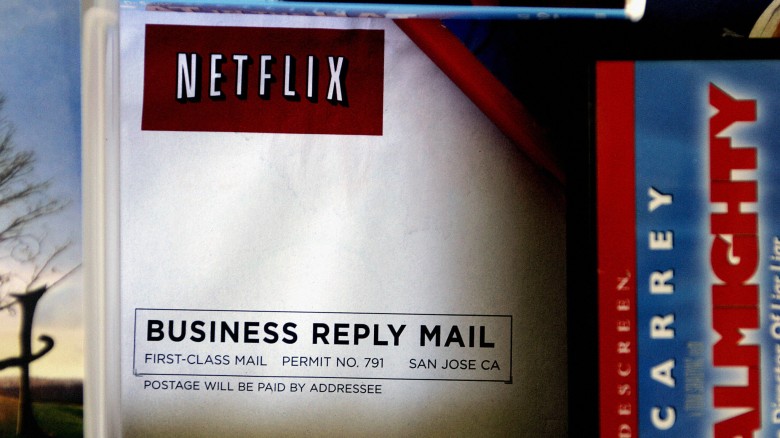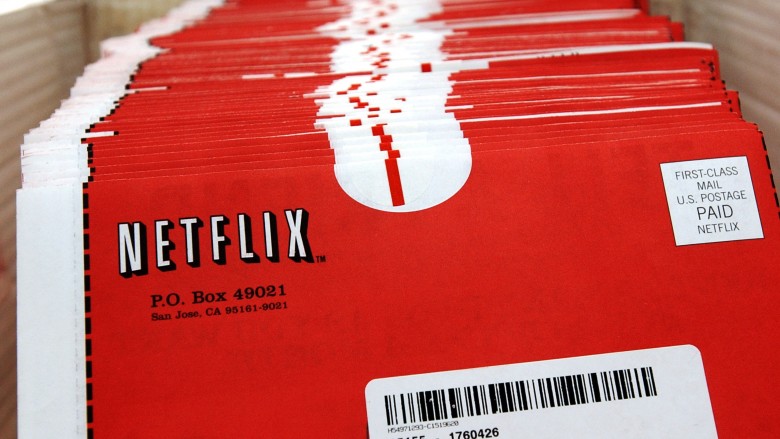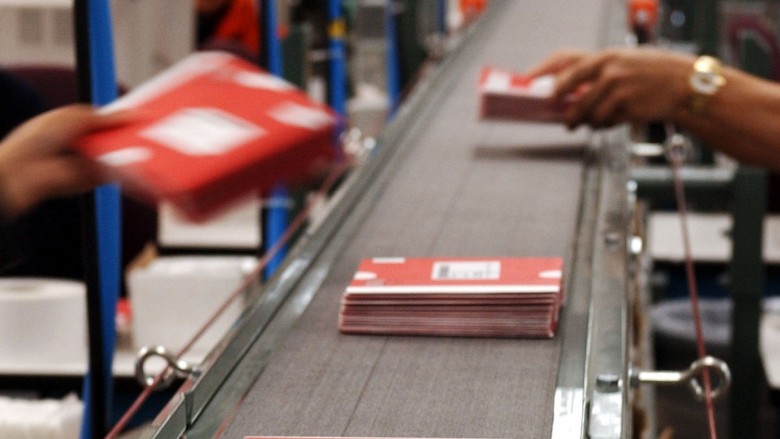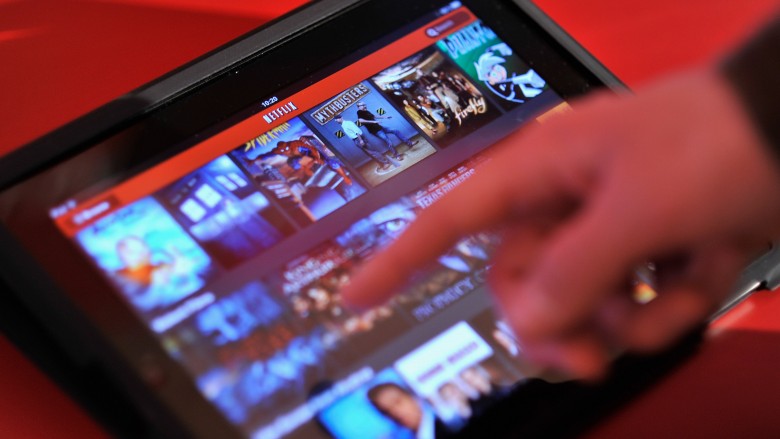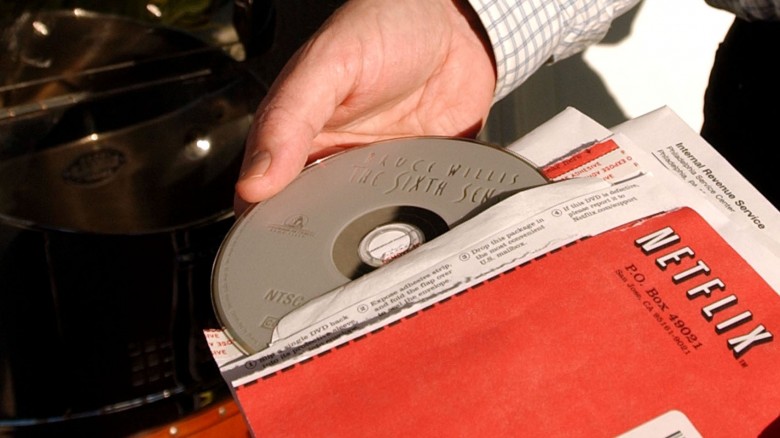The Real Reason Netflix Still Mails Out DVDs
Netflix's once-mighty DVD-by-mail service now seems as quaint as a carrier pigeon, but still it lives on, a hulking, drooling beast composed largely of fingerprint-smeared copies of Jerry Maguire. Why won't Reed Hastings & Co. just Old Yeller this thing and ride off into the digital sunset? Maybe it's because ...
It's still tremendously profitable
The DVD-only wing of the Netflix empire has been hemorrhaging subscribers by the hundreds of thousands each year since 2012—it's down a staggering 10 million overall since that time, in fact—yet it persists. Surely it's bad business to maintain the massive infrastructure required to keep it on life support, right?
Shockingly, the only service your grandmother thinks Netflix ever offered is extraordinarily profitable, still, earning the company about 50 percent of its overall operating profit, once you discount the cost of discs and postage. Not bad, considering 2016 marked the lowest DVD-only subscriber count in 11 years.
No wonder Netflix still flings those dusty old coasters from coast-to-coast.
It's actually kept the company afloat
Ironically, the part of Netflix most of us assume is on its last legs is the very thing that has kept the world's favorite binge-enabler alive. Thanks to the profitability of their DVD delivery service, Netflix has been able to expand outside the US, a move that cost the company $1.5 billion since 2012.
Fortunately, the withering army of special feature–craving physical media die-hards earned the company $1.9 billion in that same time, thus keeping it profitable and raising its stock price 13-fold.
So the next time you expire a Sunday half-sleeping through The Great British Baking Show or sip eggnog while dopily watching that fireplace footage on Netflix, remember the scratched, lost, and sat upon DVD soldiers that made it all possible.
They don't even have to market it
The icing on top of the Netflix-red cake celebrating the inconceivable profitability of the company's DVD-by-mail operations is the cost to market the old dinosaur: $0. That's right: a DVD-shaped zero dollars in marketing bucks goes toward getting the word out about how you can request Season 1: Disc 4 of Lost and then wait a few days for a postal worker to place it adjacent to your house. Adorable.
Compare that to the $1 billion the company spent in 2016 promoting its streaming service. Netflix literally spent a billion more dollars promoting streaming, yet DVDs earn it 50 percent of its operating profit. Why not ride the DVD train until it skips and derails itself, inconveniently, into the yawning gorge of obsolescence?
The library is massive
Lost in the discussion about the lifespan of Netflix's attachment to physical media is the staggering number of DVD and Blu-ray titles housed in their mysterious warehouses dotted across the globe. Sure, you have to wait for a person to drive the disc to your address and leave it in a cranny just for that purpose, like it's a postcard from your dentist or something, but the insanity of being able to select from more than 90,000 movies and TV shows is nothing to sneeze at.
Among these titles? Recent blockbuster DVD and Blu-ray releases that may take 9–18 months to hit any of the streaming services—including many that will never make Netflix Instant at all. (The straight-to-DVD sequels, of course, will linger on the service until the Sun explodes.)
Netflix Instant is actually shrinking
Compared to the near-six-figure title count of the Netflix's DVD library, the offerings on Netflix Instant—also just known, tellingly, as "Netflix"—is embarrassing, and it's getting worse. In late 2016, you had roughly 4,600 titles available to stream, down from a still-scant 6,500 in July 2015. The thin selection is due, in part, to the company's desire to ramp up the number of streaming-only Netflix originals.
If Netflix ceased its disc delivery, the lack of overall streaming titles would be thrown into sharp relief, especially among the Blu-ray-loving cinephiles looking for their next fix. For what it's worth, CEO Reed Hastings, the old sage, thinks it would be a good idea to add more streaming titles.
"We have a long way to go when you think about all the movies and TV shows that we don't have," he told a group of analysts in January 2017, who presumably all nodded politely before scribbling "NO DOI" into a legal pad.
Plenty of people still subscribe
Industry analysts think there's a sufficient number of DVD subscribers to keep the service viable for at least another five years, so your mother-in-law can slowly mail-binge her way through The West Wing into the next election cycle and beyond. Why five years? Well, it's estimated the subscriber count could drop below one million by that time, so Netflix will surely have shut down and/or consolidated many of its warehouses by that time.
Fewer warehouses means longer waits for the small cadre of disc-lovers left behind—as long as six days for the average title, according to one estimate. That's a long time to wait for a gently used copy of Trolls for pacifying your kids when they stay at meemaw's.
4K Ultra HD Blu-ray discs will look and sound better than streaming
Netflix's disc-delivery service could see a surprising surge with the widespread adoption of the 4K Ultra HD Blu-ray format. The discs will deliver superior video and audio to 4K streams, thanks to their utter lack of dependence on bandwidth. When the majority of films and television shows begin, inevitably, to be shot in 4K resolution, the discs will be the ideal way to watch.
This will not, however, mean a return to the disc-delivery subscriber base of Netflix's pre-streaming days, since for most consumers, streaming 4K resolution and audio quality versus disc-based 4K resolution and audio quality is a distinction without a substantive difference. But the freaks who want to see Robert Downey Jr's crow's feet in Captain America: Civil War the way the Russo brothers and God intended will happily wait as snail mail does its thing.

